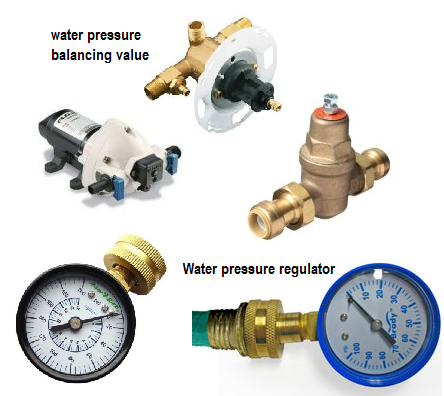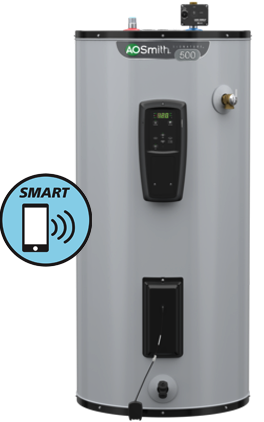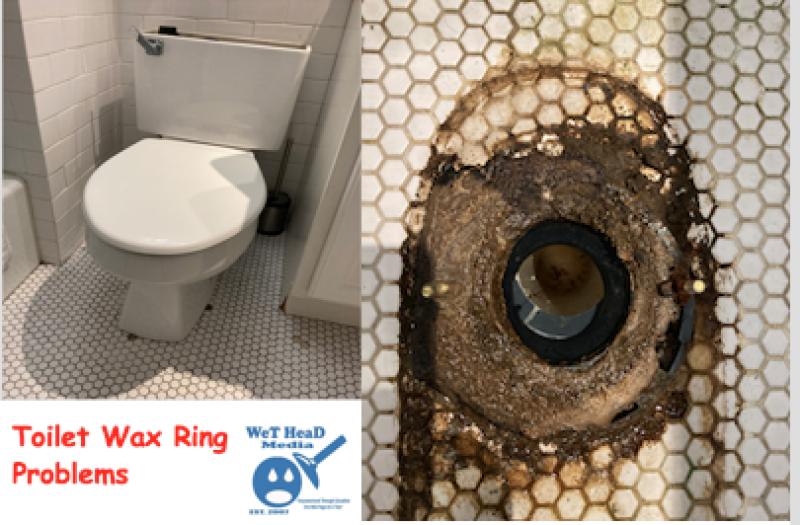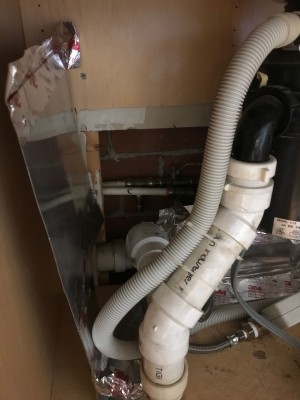Excessive Water Pressure: What Can Happen To Your Home and How To Ensure It Doesn’t Become Damaged
Did you know that the street pressure near your home will fluctuate? The reason is that the pressure rises most at night when the demand for water is low. Therefore, it’s important to have a constant water pressure in your plumbing system. The most important factor in the whole plumbing system is the pressure reducing valve (or the pressure regulator).
 Everything in your home – water heater, water closet, angle stop, faucets, washing machines and more – will suffer from excessive wear and, when that happens, they’ll start to tear up (wear and tear) especially if their pressure isn’t kept a close eye on. If your home has a 75psi or more a reading, the pressure regulator is not working for one of three reasons:
Everything in your home – water heater, water closet, angle stop, faucets, washing machines and more – will suffer from excessive wear and, when that happens, they’ll start to tear up (wear and tear) especially if their pressure isn’t kept a close eye on. If your home has a 75psi or more a reading, the pressure regulator is not working for one of three reasons:
1 – There’s not one installed
2 – It’s been bypassed
3 – It’s no longer working
Of course, there is an exception to that rule, which is a system that has a multi-range pressure regulator that can handle the demands of a lawn. Should someone have used a specialized pressure regulator inside the home – although this is highly unlikely – the pressure needs to be adjusted to less than 75psi. If you’re unable to do this using the pressure reducing valve, you’ll need to either repair it or replace it.
If you’re going to adjust the water pressure regular pressure, you’ll need a pressure gauge after the regulator. Typically what you see is the hose bib sitting above the regulator that comes into the home. Be sure that it’s located after the regulator for the line that goes into the home. You want to ensure that the home’s pressure is sitting between 50 and 75psi.
It’s not hard to adjust the pressure of a working regulator. It’s best to look at the manual or search the Internet for the manufacturer for the specific model. Now, some regulators have arrows on the cap assembly, letting you know what way you’ll need to turn the cap if you want to increase or decrease the pressure. Bear in mind that a non-working regulator will start leaking if you try adjusting it. Therefore, you should have a plumber on standby… just in case.
How To Know If You Have A Water Pressure Problem
Now, there are several ways to know if you’ve got an issue with your water pressure:
– Low flow from the fixtures
– Valve noise
– Creeping pressure buildup
– Unstable flow
A Look At Low Flow
A clogged system within the regulator is often the reason for a low flow. However, it can also be caused by an over-demand from the home’s appliances and too small of piping in the home. Or, it could be all three reasons! You need to look back at the troubleshooting guide for the regulator to see how you clean it. Remember, water wear could cause an issue with taking apart the regulator.
A Look At The Valve Noise
It’s not uncommon for a malfunctioning valve to chatter, whistle or hum. After all, water that travels quickly will cause a vibration that makes these noises. If you are hearing these noises, you’ve got one of two problems:
– Too small of pipes
– Undersized valve within the line
A plumber will need to check this out.
Chatter is the result of a worn seat washer or a loose seal ring within the regulator. Regulators ted to have repair kits to deal with worn seat or loose seal rings. However, you need to know a little about this to install it. And, they don’t always work because, as time passes, the unit wears down. A repair kit will be one-third the price of a new regulator, and may or may not work. Plumbers will generally just put a new regulator on and they’ll generally provide you with a warranty and labor.
A Look At Unstable Flow
This issue is typically the result of low pressure within the main supply coming in from the street; usually noted in excessive demands for water (daytime peak hours). However, appliances – washing machines and dishwashers – running at the same time can also cause this issue. If the main is the cause, your water department is at fault. Not much you can do except talk to them. If the issue is in the home, your services lines may be too small; you’ll have to increase them. Before you do that though, boost the regulator’s pressure.
A Look At Creeping Pressure Buildup
This is typically the result of thermal expansion, and happens every time the water heater is running. Installing a thermal expansion tank at your water heater may help. It doesn’t keep the pressure from increasing but it can keep it at a decent level.
The thermal expansion tank will cushion the extra pressure. The water pressure burst will push up against the diaphragm, which is then pushed down against compressed air and toward the tank’s bottom. The diaphragm’s motion relieves the shock from the extra pressure.
While thermal expansion tanks are a great option to protect against the excess pressure buildup, the regulator could be an issue due to cut or worn O-rings or seals. It could be that you have a foreign object, which means you may have to flush it out by fully opening two outlets for about five minutes. You could also have something stuck to the seal ring’s seating face, causing it to have displaced. If you have worn parts, it’s possible a repair kit will work. However, if the unit’s body is beyond repair, it may be best to just replace it entirely.
Solving your excessive water pressure issues may be as easy to tightening a bolt on the regulator or as complex as boosted the line size in some or all of your home. However, if you don’t solve the issue when you notice it, it’s going to cause even bigger problems down the road. Be sure to look at the water pressure every so often to save yourself money in the future.




What’s up, its good paragraph concerning media print, we all be aware of media is a enormous source of data.